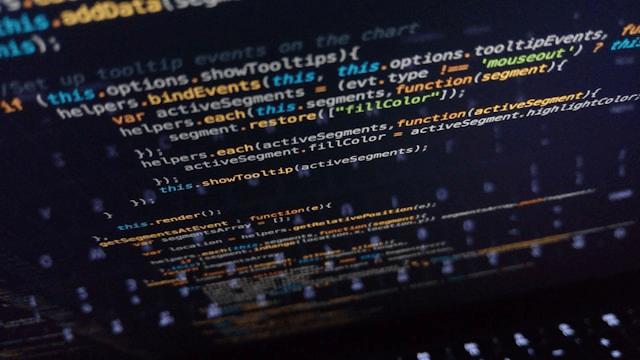Machine learning is transforming industries by enabling systems to learn from data and make decisions with minimal human intervention. But how do these systems actually learn? The answer lies in training a machine learning model.
If you’re new to the field, this guide will walk you through the complete machine learning training process from defining your problem to evaluating and deploying your model. Whether you’re using Python libraries like scikit-learn or TensorFlow, understanding the fundamentals will help you build effective, real-world ML applications.
Step 1: Define the Problem
Before you dive into code or data, clearly define the problem you’re trying to solve. This step determines the type of machine learning model you’ll need to train.
Common Problem Types:
-
Classification (e.g., spam vs. non-spam emails)
-
Regression (e.g., predicting house prices)
-
Clustering (e.g., grouping customer segments)
Identifying the nature of your problem helps you select the right algorithm and evaluation methods later on.
Step 2: Collect and Prepare Data
The success of your model heavily depends on the quality of your data. In fact, data preprocessing for ML is often the most time-consuming part of the pipeline.
Data Collection Sources:
-
CSV files or Excel sheets
-
Public datasets (e.g., Kaggle, UCI Machine Learning Repository)
-
APIs (e.g., Twitter API, Google Maps API)
-
Web scraping or internal databases
Data Preparation Steps:
-
Cleaning: Remove duplicates, fix missing values, correct errors.
-
Normalization/Standardization: Scale numeric features to a consistent range.
-
Encoding: Convert categorical variables into numerical format (e.g., one-hot encoding).
-
Feature Selection: Choose the most relevant features to reduce complexity and improve accuracy.
This step is essential for producing a model that learns effectively from input data.
Step 3: Split the Dataset
To evaluate how well your model generalizes to new data, you need to split your dataset.
Standard Data Splits:
-
Training Set (70–80%): Used to train the machine learning model.
-
Validation Set (10–15%): Used to tune hyperparameters and prevent overfitting.
-
Test Set (10–15%): Used to evaluate the final model performance.
Randomly splitting data ensures that each subset is representative of the whole, minimizing selection bias.
Step 4: Choose an Algorithm
There are many algorithms to choose from, each with strengths depending on your data and goal.
Popular Algorithms:
-
Linear Regression (for continuous variables)
-
Logistic Regression (for binary classification)
-
Decision Trees and Random Forests
-
Support Vector Machines (SVM)
-
K-Nearest Neighbors (KNN)
-
Naive Bayes
-
Neural Networks (for more complex tasks like image and speech recognition)
Your choice will affect both model performance and training time, so test a few and compare results.
Step 5: Train the Model
Now comes the core of the process: model training. This is where the algorithm learns patterns from the training data.
How Training Works:
-
The model makes predictions on the input data.
-
The prediction is compared to the actual output (ground truth).
-
The error (loss) is calculated.
-
The model adjusts its internal parameters to reduce error.
-
This cycle repeats over multiple epochs (training cycles).
Tools to Use:
-
scikit-learn: Easy-to-use Python library for basic ML models.
-
TensorFlow/Keras: Deep learning frameworks for neural networks.
-
PyTorch: Popular among researchers for flexibility.
These tools offer pre-built functions to train and fine-tune models effectively.
Step 6: Evaluate the Model
Once your model is trained, the next step is to assess how well it performs using the validation or test set.
Model Evaluation Techniques:
-
Accuracy: Percentage of correct predictions (good for balanced datasets).
-
Precision and Recall: Especially useful for imbalanced classification problems.
-
F1 Score: Harmonic mean of precision and recall.
-
Confusion Matrix: Shows how well the model distinguishes between classes.
-
Mean Squared Error (MSE) or R-squared: Common in regression problems.
If your model performs well on the training data but poorly on test data, it may be overfitting memorizing patterns rather than generalizing them.
Step 7: Tune Hyperparameters
Hyperparameters are model settings that you define before training begins, such as the learning rate, number of layers in a neural network, or the number of trees in a random forest.
How to Tune Them:
-
Grid Search: Tries every possible combination of parameters.
-
Random Search: Tests a random subset of parameter combinations.
-
Automated Tools: Libraries like Optuna or Hyperopt can speed up this process.
Hyperparameter tuning can significantly boost model accuracy and robustness, making it a critical step in the machine learning training process.
Step 8: Deploy and Monitor
After you’ve trained and evaluated your machine learning model, it’s time to deploy it into a real-world environment.
Deployment Options:
-
Use cloud services like AWS SageMaker, Google Cloud AI, or Azure ML.
-
Build APIs using Flask or FastAPI to integrate your model into applications.
-
Deploy models directly in web or mobile apps.
Monitoring:
-
Track model predictions over time to ensure consistency.
-
Set up alerts for performance degradation.
-
Periodically retrain the model using updated data to maintain accuracy.
Deployment ensures your model delivers real-world value, while monitoring keeps it relevant and reliable.
Conclusion
Learning how to train a machine learning model involves much more than just running a few lines of code. It requires a systematic approach defining the problem, preparing quality data, selecting the right algorithm, training and evaluating the model, and finally deploying it in the real world.
From supervised learning examples to model evaluation techniques and hyperparameter tuning, each step plays a vital role in building effective machine learning systems. Whether you’re working on a small project or a production-level application, understanding this full process will help you create accurate, scalable, and impactful ML models.

